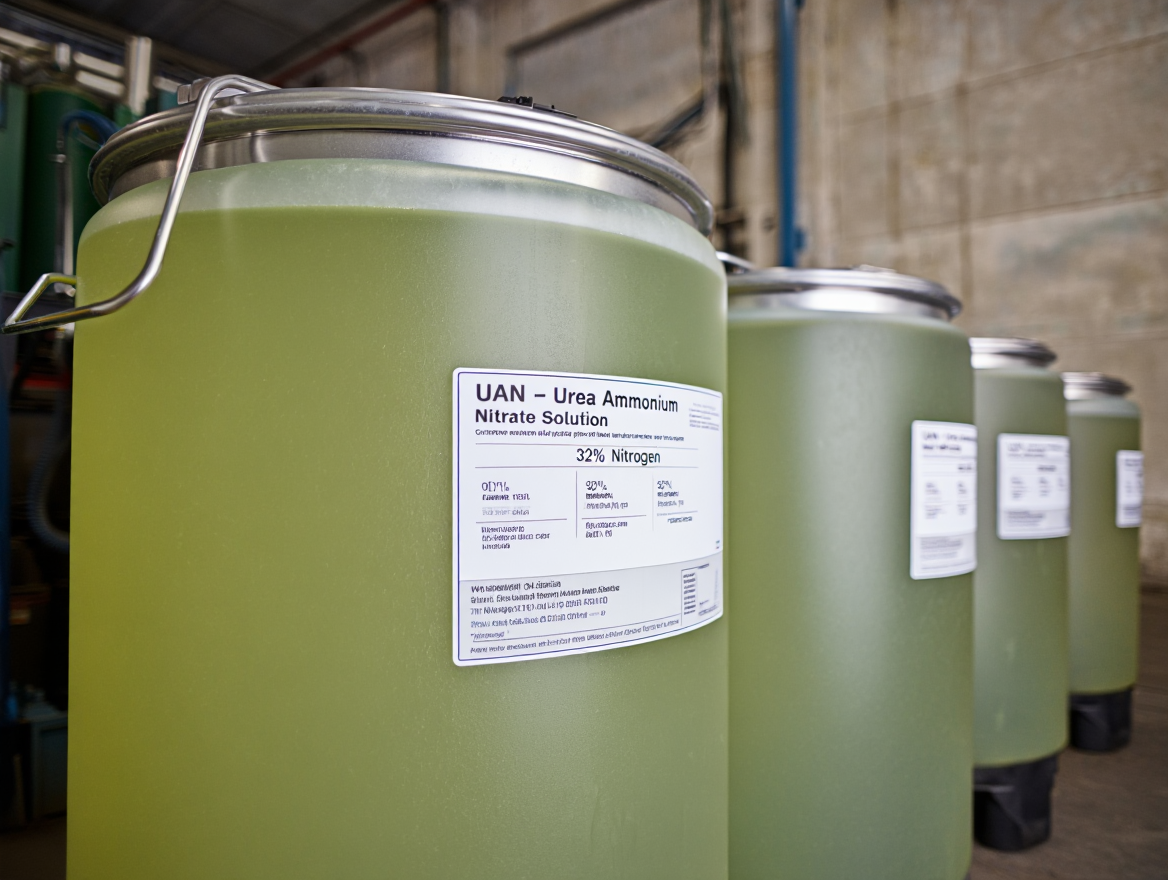
UAN (Urea Ammonium Nitrate) is a clear liquid fertilizer solution containing 28–32% nitrogen. It blends urea, ammonium nitrate, and water into a stable form that can be sprayed directly onto crops. Its popularity stems from ease of use and the ability to mix with pesticides and herbicides for combined field passes.
Production & Chemistry
UAN is produced where urea and ammonium nitrate are manufactured. Plants are concentrated in North America, Europe, and Russia, often integrated with existing ammonia and urea complexes.
Applications
- Row Crops: Corn, wheat, and oilseeds in mechanized systems.
- Turf & Horticulture: Sometimes used in foliar feeding programs or drip irrigation.
- Flexibility: Can be applied pre-plant, side-dress, or as a top-up during crop growth.
Trade & Supply
Because of its bulk and water content, UAN is less globally traded than urea. Shipping long distances is costly, so most markets rely on regional production. The US is a major consumer, while Russia and Europe are key exporters.
Market Dynamics
UAN competes directly with granular urea and ammonium nitrate. Farmers often choose based on logistics, equipment, and local prices. Environmental regulation of ammonium nitrate impacts UAN availability, particularly in Europe.
Sustainability & Issues
- Leaching risk: UAN is highly soluble and vulnerable to losses if not applied carefully.
- Carbon intensity: Like all nitrogen fertilizers, UAN is tied to natural gas feedstocks.
- Safety: While more stable than pure ammonium nitrate, UAN is still subject to regulation in certain regions.
Outlook
UAN demand will remain strongest in developed, mechanized agriculture (US, EU). Efficiency products and fertigation use are likely to expand, while sustainability pressure may push for inhibitors and blended solutions.




